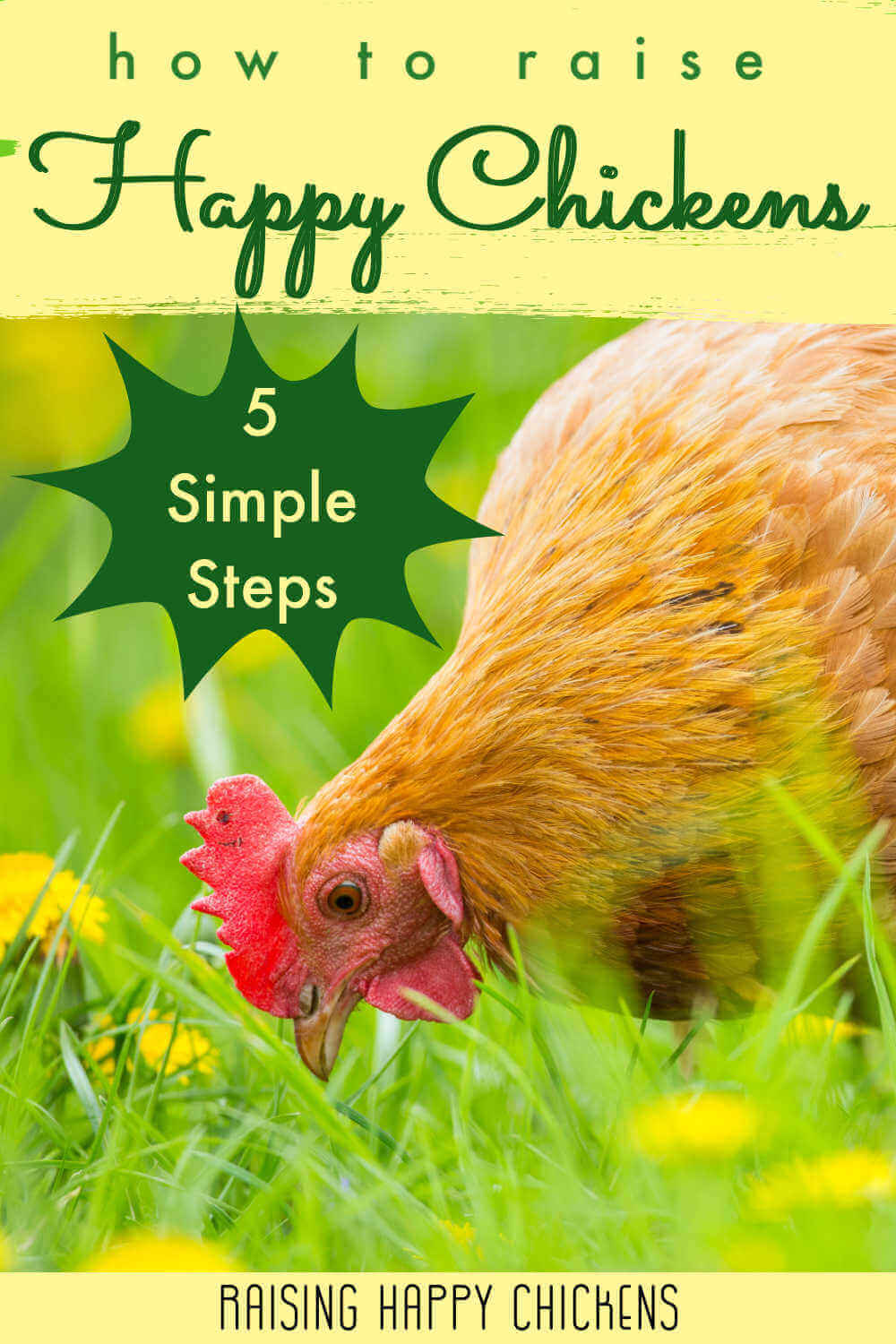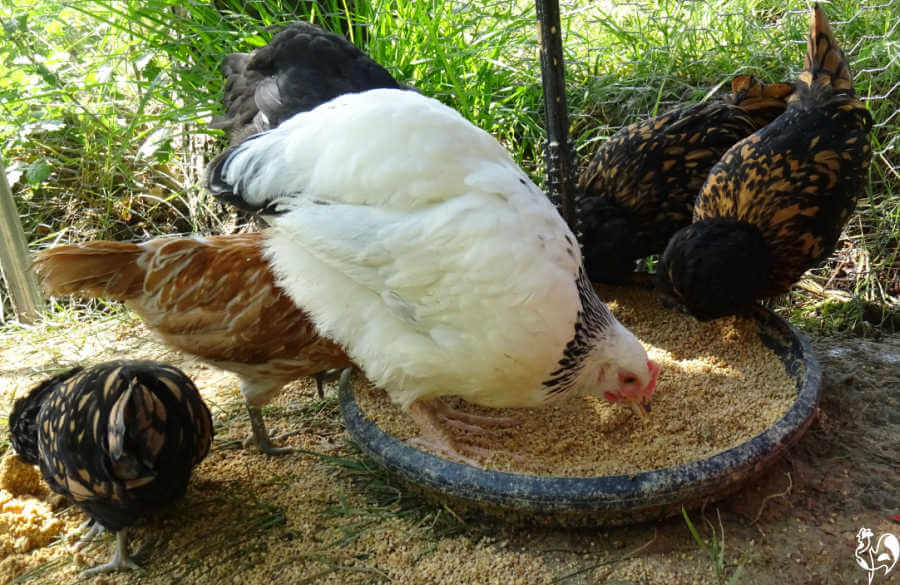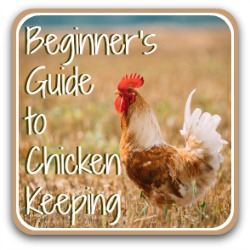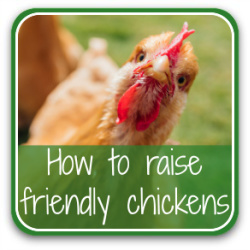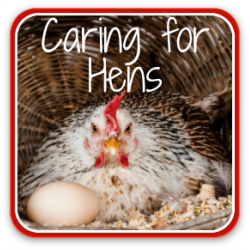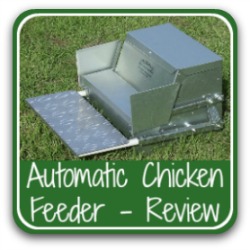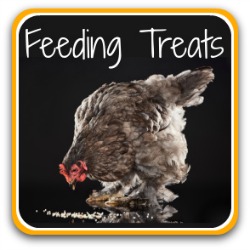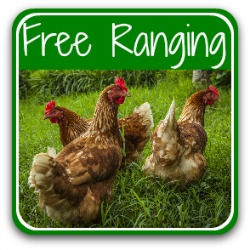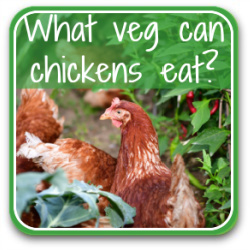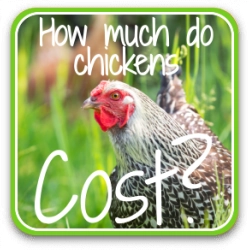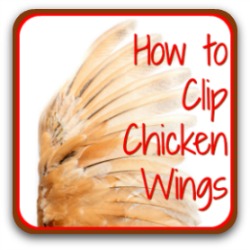- Home
- 5 starter steps
How to raise happy chickens for beginners (and not-so-beginners!).
5 simple steps to raising happy, healthy chickens, based on globally adopted welfare standards.
Chickens aren't difficult to care for – as long as you know what you're doing. So if you've bought a small backyard flock and would like to know not just how to raise them but also make them happy, this article is for you!
In 1999, legislation was introduced across the European Union laying down five basic welfare needs of poultry. Those five needs had to be satisfied if chickens were to live a happy, healthy life.
That legislation became the Animal Welfare Act 2006 in the UK, and was adopted across the world by animal welfare organisations – see sources for specific country directives.
Although this legislation was directed at commercial producers, its main regulations are equally applicable, with some adjustments, to small backyard chicken keepers.
So they're an excellent starting point for all of us who want to know how to raise happy chickens to lead a safe, healthy life.
Embracing these welfare needs for your own flock is straightforward, and will make sure they're being cared for to the highest possible standards.
The five welfare needs of happy chickens.
- The whole of this article is important. However, if there's something specific you want information about, click on the links below to jump straight to that section.
- Each section gives a very brief, basic outline. Use the links in each section to go to more detailed information about the subject.
- The related articles include everything you need to cover to make sure you're meeting your flock's welfare needs.
- Don't try to read all the articles in one sitting! Bookmark this page and return to it regularly.
- Don't have time to read all the articles? The top one in each section, marked with '*', is the most important.
1. How to raise happy chickens: provide adequate food and drink.
The first welfare need talks of:
"Freedom from hunger and thirst by ready access to fresh water and a diet to maintain full health and vigour".
Providing the best chicken feed.
Chickens need different foods at different life stages to meet their changing nutritional needs. Failure to recognise this can lead to serious health problems.
- A good quality chicken feed, kept safe from wild birds and rodents, should be made available all day.
- Baby chicks require higher levels of protein.
- From 8 to about 18 weeks, chickens need less protein.
- Adults after 18 weeks require more calcium as they begin to lay eggs.
- Grit is necessary at all ages if chickens are eating anything apart from their own feed – treats, for example.
- Providing oyster shell supplements the calcium requirements of laying hens.
- All chickens must have equal access to food. Watch for those lower down the pecking order to be certain they're not being excluded.
Relevant articles about what chickens should eat.
- * This article explains details and recommends different foods for different life stages.
- Learn about the difference between grit and oyster shell, and why they're necessary.
- Read about different types of feeder, and the rodent-proof one I highly recommend.
What do chickens drink?
Chickens need to be kept hydrated by having clean, fresh water they can access all the time. It's as simple as that.
- Change it regularly.
- Keep waterers clean.
- Be sure to unfreeze it when it's frozen.
Relevant articles.
- * Read more about water and waterers, including how to unfreeeze it.
- Find out how to keep baby chicks well hydrated.
- Information about keeping chickens hydrated during hot weather.
2. How to provide a coop your chickens will be happy living in.
The second welfare need covers:
"Freedom from discomfort by providing an appropriate environment including shelter and a comfortable resting area".
 Chicken coops come in all shapes and sizes.
Chicken coops come in all shapes and sizes.Providing the best chicken coop for your circumstances.
Chickens must have a place to live where they are protected from physical discomfort such as extremes of heat and cold, safe from injury and distress, and with enough space to perform their natural behaviours, such as laying eggs and roosting.
- Coops must be large enough to ensure chickens have sufficient space.
- Correct ventilation is a critical part of a safe chicken house. It makes sure there is no build up of ammonia from droppings, and keeps the environment cool in summer and free from frost in winter.
- Flooring must allow chickens to perform natural behaviours such as scratching, which helps control stress and minimises the chance of destructive behaviours.
- Both the coop and flooring must be easy to clean and prevent the build up of parasites and disease.
- Any electrical items must be out of the chickens' reach and protected from rodents.
Perches (also called roosts) and nest boxes.
- Perches should allow at least 20cm (8") of space per chicken for smaller breeds and bantams, 25cm (10") for larger breeds.
- Each one should be at least 46cm (18") apart, and placed so that chickens are not directly on top of each other.
- The width will depend on the size of chicken. For standard and large breeds, 5cm x 5cm (2" x 2") is ideal.
- There should be at least one nest box for every five hens – although you'll probably find they all want to crowd into the same one!
- Bedding in nest boxes should encourage "nesting behaviour" and minimise the risk of parasites such as lice and mites.
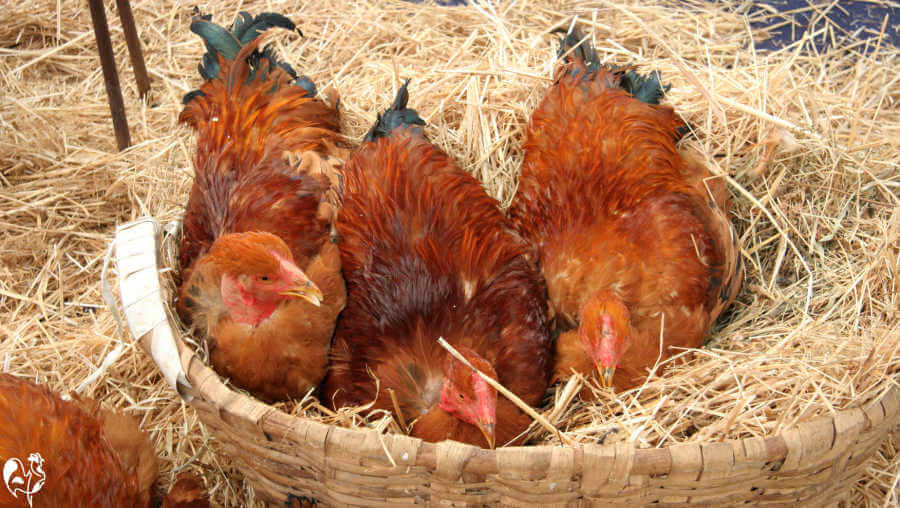 No matter how many nest boxes you have, they'll all want the same one!
No matter how many nest boxes you have, they'll all want the same one!Articles about chicken coops.
This is the most comprehensive section in the welfare needs documentation. It's impossible to cover anything like that level of detail here, but you'll find it all in these related articles.
- * Detailed article comparing a well-known coop to specific welfare needs related to housing.
- Nest box designs: which will work best for you?
3. How to raise happy chickens: keep them free from pain and disease.
The third welfare need:
"Freedom from pain, injury or disease by prevention or rapid diagnosis and treatment".
Chickens tend to hide illness very successfully. It's part of their need not to appear to be weak and make themselves a target for predators. So it's not always easy to help them, because by the time it's clear they're ill it's often too late.
Despite that, it's important to know how to spot a chicken who may be suffering and assess when s/he can be treated at home and when a trip to a veterinary surgeon may be required.
- Prevention is a critical part of keeping chickens healthy as well as happy. Reducing the risk of illness and disease by making sure we provide ways of developing and maintaining a strong immune system should be at the heart of everything we do.
- Constant scrutiny of the flock, both by simply watching their behaviour and by examining them regularly, can help to avoid any health issues from developing to a critical stage.
- New arrivals, or chickens who are clearly suffering from illness or disease must be moved to a separate, quiet place away from the rest of the flock until their issue has been sorted.
- An effective biosecurity system is vital to ensure that parasites and diseases aren't brought onto your property, and to prevent them spreading if they are introduced.
- You should know, before you need to do it, either how to humanely cull a sick chicken yourself, or who can do it for you should the need arise.
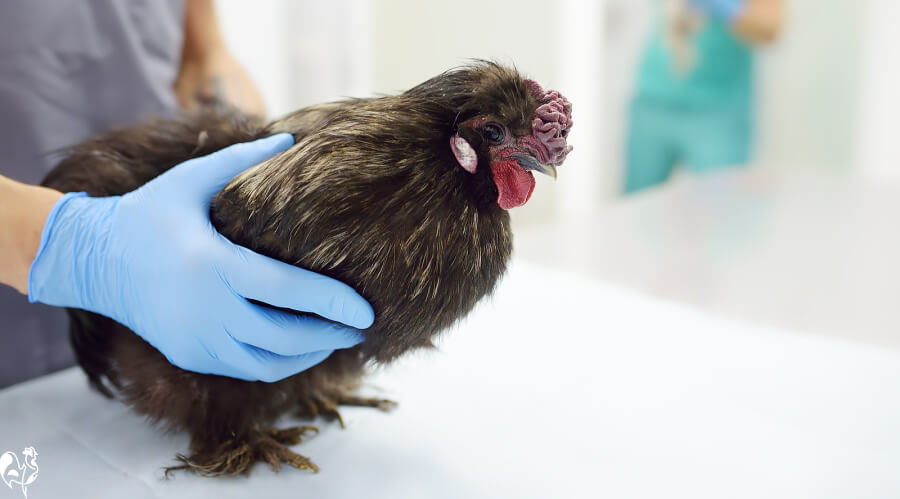 Know your nearest avian vet before you need them!
Know your nearest avian vet before you need them!Relevant articles about chicken health issues.
- * Naturally sourced vitamins and minerals which can help prevent illness and disease.
- Biosecurity: simple steps to help keep your flock free from disease.
- Health problems by age: how to spot them and what to do.
4. Make sure they have enough space, and some friends.
The run: basics.
- Chickens don't like being exposed, so there should be access to cover to protect from from heat, rain and snow, and wind. Trees and bushes are ideal, and can also help protect from overhead predators. Where that's not possible, artificial shelters should be provided.
The fourth welfare need enabling us to raise happy chickens is the requirement for all our chickens to have adequate space, and "entertainment" within that space:
"Freedom to express normal behaviour by providing sufficient space, proper facilities and company of the animal’s own kind".
Whether you have a smallholding with unlimited stretches of land, or a small urban garden ideal for just a few hens, chickens need to have access to an outside space – and the minimum space each chicken needs is the same.
It must be large enough to allow the flock to stretch their wings; should have space for dust-bathing and a quiet area for just hanging out with their flock-mates; and ideally it should provide an area where the flock can forage for food, including bugs.
The more land the flock has to range over, the fewer behavioural problems you're likely to find.
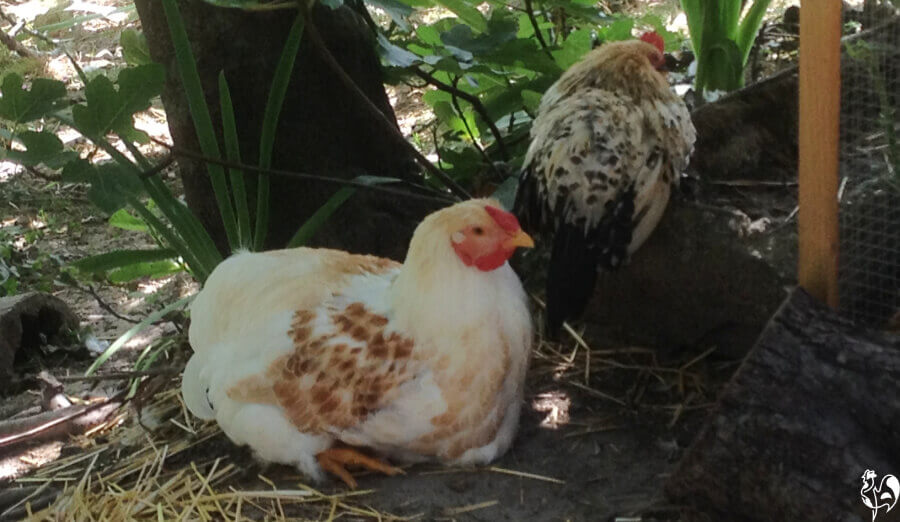 My chickens are lucky to have a huge fig tree which provides shade.
My chickens are lucky to have a huge fig tree which provides shade.- External access should be allowed between about 9am for adult birds (slightly later, about mid-day, for chicks and young ones) and dusk.
- The absolute minimum space is one square metre (about 11 square feet) per chicken. For bantams and small breeds like the Silkie allow slightly less; for larger breeds, more.
- Flooring in the run must be well drained to protect the chickens' feet from mud and wet – and damp areas can lead to pests like flies and mosquitoes, which should be kept to a minimum.
How to enrich the chicken run for happier chickens.
Offering an outside space is good husbandry; adding some simple "enrichment" features has been shown to improve general health and avoid disruptive behaviours like feather picking.
Increasing interest is simple, and can include...
- Dust-bathing areas where chickens have access to loose soil or sand to socialise and clean their plumage.
- Different perching opportunities at varied heights, such as a "log gym" (logs of different shapes and sizes placed together in one area), an old tree stump, small fruit trees and bushes, straw bales or even a discarded Christmas tree.
- Suspending balls of vegetables such as a lettuce or cabbage on rope at chicken head height provides hours of interest. Feeding blocks can also be used.
- Fun items like such as swings, peck toys, mirrors and even xylophones provide additional entertainment for your chickens – and for you in watching them being used!
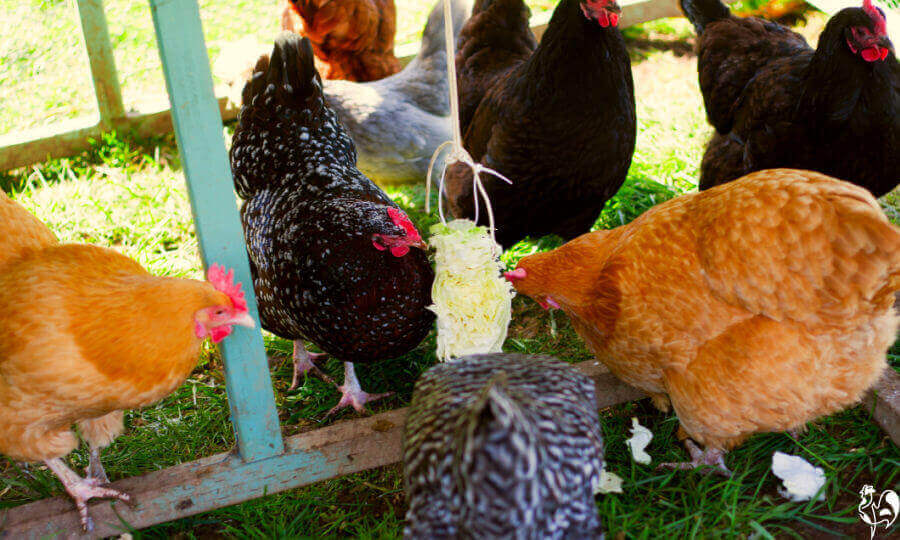 A hanging cabbage provides hours of fun!
A hanging cabbage provides hours of fun!Articles relevant to outside space requirements.
- Dust baths: what they are and how to create them.
- Creating boredom busters for the chicken run.
5. Manage chickens' stress levels by making sure they're safe.
The final of the five welfare needs:
"Freedom from fear and distress by ensuring conditions and care which avoid mental suffering".
Chickens are high on almost everybody's menu. So keeping them safe from predators is a must.
It's not only predators, though. The increase in incidents of bird flu, which has resulted in thousands of chickens having to be culled, means that chickens must also be protected from carriers – wild birds and waterfowl.
- Coops and runs must be predator-proof, with adequate fencing built high enough to deter climbing predators and dug deep enough into the earth to deter digging animals.
- They should also be covered to prevent birds of prey and wild birds gaining entry.
- Items like weeds, which can provide cover for predators and rodents, should be kept under control.
- Family pets such as dogs and cats, which have a prey instinct and may be tempted to do your chickens harm, must not be permitted near the coop or run.
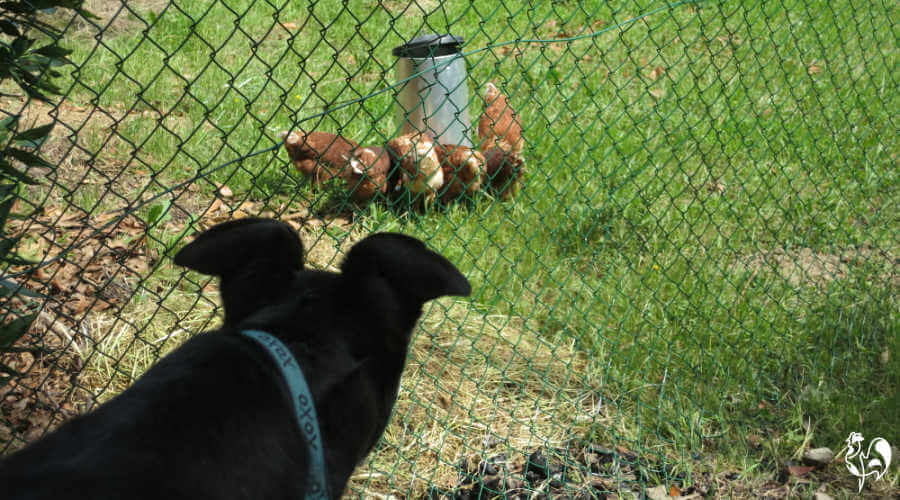 Our ex-racing greyhound, Nero, would love to "meet" the chickens!
Our ex-racing greyhound, Nero, would love to "meet" the chickens!- Chickens' food must be cleared from the coop and run to avoid it acting as a magnet for predators and rodents.
Articles relevant to keeping chickens safe from physical harm.
- * How to fence a chicken run: what works best?
- Predators: learn how to spot their presence and protect the flock.
6. 3 essentials for chicken keepers.
As well as the five welfare needs we should put in place for our chickens, the Animal Welfare Act and associated country-wide standards describe three features which are essential for anyone who keeps chickens.
They are:
- Sound knowledge of the biology and husbandry of chickens, including how their needs may be best provided for in all circumstances.
- Skills in observing, handling, care and treatment of chickens, and the ability to detect and resolve problems
- A rapport and and empathy with chickens, and enough dedication and patience to be able to raise them to become happy and healthy.
I don't see any of those being a problem for any of us who take the time to understand and dedicate our time to learning how to raise happy chickens!
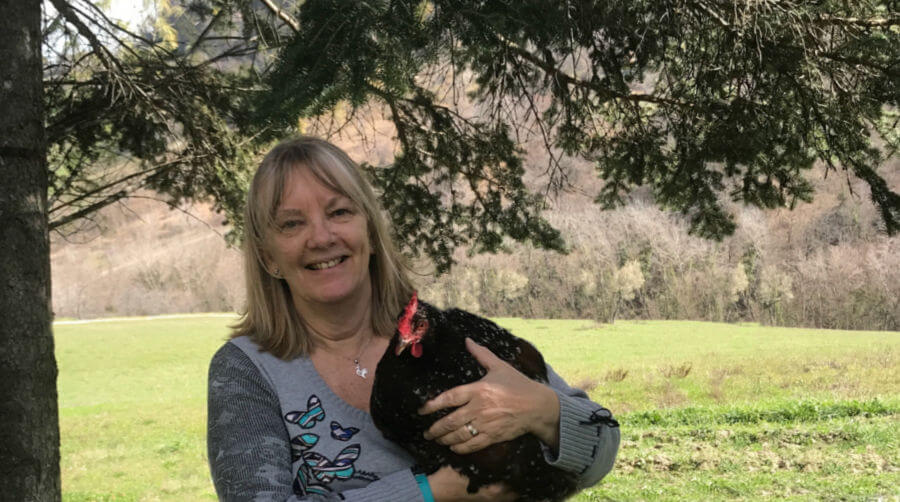
Want even more information about how to raise happy chickens?
Click any of these button images to go to the article.
Sources.
A lot of "facts" you'll find on the internet are often people's individual views, based on inaccurate information repeated from poor quality sources.
The information I provide in this article and others is based not just on my own experience, but on evidenced facts from scientific, peer-reviewed research and books from highly respected and experienced poultry keepers such as Gail Damerow.
Some of the trusted sources I have used in this article are these.
1. European Union: Directive 1999/745: Laying hens. Pub. European Commission, Directorate General for Health and Food Safety, Animal welfare unit, 1999, updated.
2. UK Government, General Acts: Animal Welfare Act. Pub. 2006.
3. RSPCA: Welfare standards for laying hens. Pub. RSPCA, 2017 and updated annually.
4. UK Government, Department for the Environment, Food and Rural Affairs: Code of practice for the welfare of meat chickens. Pub. DEFRA, 2018.
5. American Humane Farm Program: Animal Welfare Standards for Broiler Chickens. Pub. 2019.
6. Australian Government, Department of Agriculture, Fisheries and Forestry: Australian Animal Welfare Standards and Guidelines for Poultry. Pub. 2022.
- Home
- 5 starter steps
